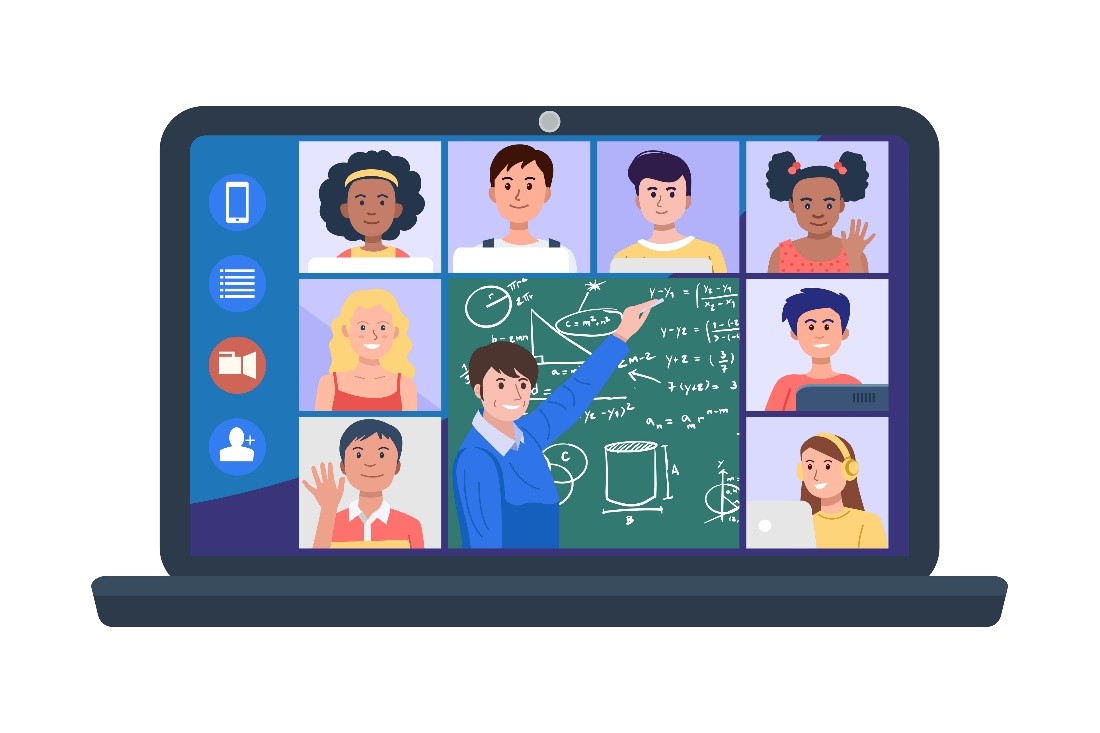By Michele McDanel (opens in new tab)

Image credit: iStock
Earlier this summer, we discussed how the Modern Life and Learning team’s data scientists and researchers have been leaning in (opens in new tab) to help product groups adapt to new challenges during the COVID-19 pandemic and distance learning.
While data scientists lent their skills to such tasks as forecasting demand, researchers pivoted quickly to adjust their research plans. Their goals? Understand pain points, needs, and opportunities for students, teachers, and parents to help ongoing and future distance learning proceed successfully while being mindful of students’ social and emotional well-being.
Starting at the bottom rung
Before a student steps onto the ladder to learning, another hierarchy often comes into play, and that’s the Hierarchy of Needs (opens in new tab) as described by Abraham Maslow. “Students have many concerns before instruction, such as food security,” said user researcher Michelle Wantuch. This has come to the forefront in recent months, with many school lunch programs canceled and parents out of work due to the pandemic.
The team documented that even after those basic survival needs are met, many students face additional struggles related to their schoolwork. These issues include things like access to devices and quality Internet connections to having a safe place to log in to their online learning platform. According to the most recent data from the National Center for Education Statistics (NCES) in April of this year, 14 percent of children ages 3-18 don’t have internet access at home and 17 percent don’t have access to a computer.¹
There’s also the question of how to ensure there is equity for students with Individual Education Plans (IEPs) and those requiring accommodations. Some of this includes and can be accounted for through additional support, such as extra time to complete exams; translation of course content; access to the Immersive Reader (opens in new tab); or a forum for getting clarification on course work or exam questions. The team is continuing to identify how Microsoft products can best address some of these gaps.
Additionally, Microsoft recently announced a partnership with the United Nations Educational, Scientific and Cultural Organization (UNESCO) to create a Global Skills Academy, where young people around the world can be taught digital skills and receive free access to employment and training materials.
Managing students’ well-being
Even once students’ basic needs were met and they had the equipment and connectivity needed to begin learning, researchers documented another concern: mental health.
During the first few months of online learning, teachers adjusted their lesson plans to focus more on maintaining relationships, providing a sense of connection, and reducing stress. So rather than adding to an already stressful situation, they streamlined their assessments. For example, many teachers opted to use open-book tests to promote equity and reduce test anxiety while still providing an opportunity to assess learning.
“The advantages of open-book tests are that they level the playing field to some extent, and they mirror the way things are done in the work world,” said Wantuch, adding that open book tests typically include more complicated, application-of-knowledge questions rather than just fact memorization questions.
Customer feedback and pain points around not being able to see more people at once in a Teams meeting are being addressed by the product team. Students were missing the experience of seeing all their classmates together in a class, and this feedback was reflected by Information Workers in the business context as well. Together Mode, which was recently rolled out, places all the participants on a video call together in a virtual space so they look like they’re in the same place together. Other needs that have been documented (such as managing stress and anxiety) are being addressed further.
Helping teachers adapt
Teachers encountered their own struggles, too. Without physical classrooms, they have lost the ability to have quick one-on-one conversations with students at their desks. Whiteboard (opens in new tab) and chat can fill in some of the needs here, but teachers would like better options for these impromptu interactions.
For example, one art teacher spent simply explaining to a student how to draw a nose. In a typical classroom, the teacher could have demonstrated that by drawing a quick sketch with the student looking on and asking questions.
Distance learning and/or hybrid learning scenarios are likely for the foreseeable future, with many school districts moving to a hybrid or remote learning environment for the beginning of this school year. As we gear up for another school year, the Modern Life and Learning team is continuing to partner with their product counterparts on finding ways to address the needs of learners, educators, and parents.
How has distance learning changed the way your school or classroom operates? Have noticed any differences this year with the social and emotional well-being of your students? Tweet us your thoughts at @MicrosoftR (opens in new tab)I or like us on Facebook (opens in new tab) and join in on the conversation.
¹ https://usafacts.org/articles/internet-access-students-at-home/ (opens in new tab)– study published April 6, 2020.
Michele McDanel is a builder, an organizer, and a storyteller with a bachelor’s degree in Communications and an MBA. Michele is energized by solving problems and meeting business needs through communications and customer experience solutions that raise the bar. She enjoys building relationships and managing teams. Overall, she likes figuring out what the “special sauce” is that will be the competitive differentiator for a business and its solutions. Michele joined the Customer Insights Research team in 2019 to amplify the great UX research and data science work they do, and to showcase the thought leadership of the team across internal and external communications, events, and social media.

